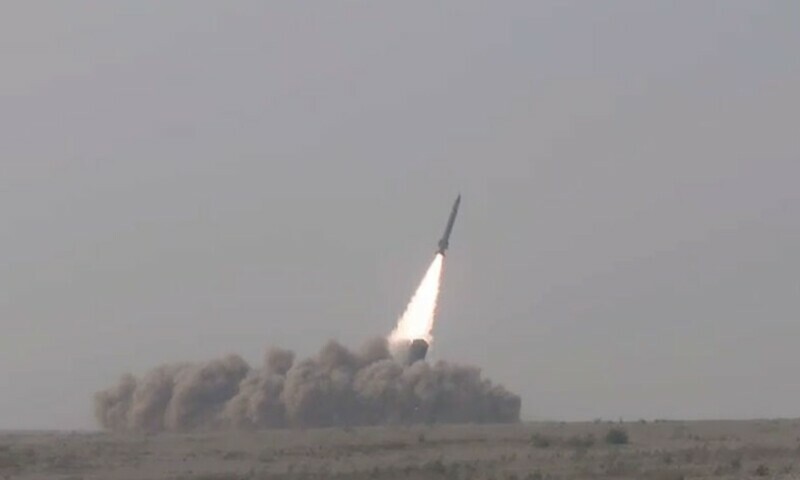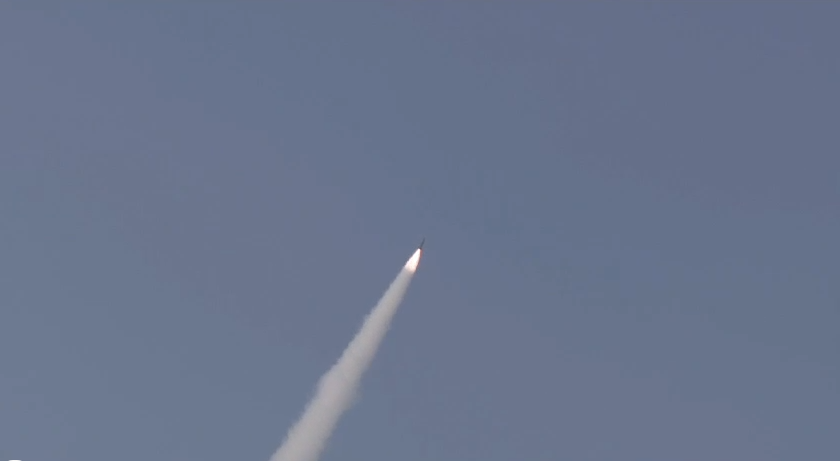With the recent test, i noticed that this section does not have a dedicated thread to Pakistan missile assets thus i am making this thread a sticky which is to contain all news regarding tests, current missile assets and missile developments. This thread can also contain history of Pakistan's missile development as well as Nuclear Ambitions as well. So with that the opening post can be of the recent test.
Army conducts successful flight test of Fatah-II missile
RAWALPINDI:
The Pakistan Army conducted a successful flight test of the Fatah-II missile system, said a statement released by the Inter-Services Public Relations (ISPR) on Wednesday.
The missile is equipped with "state of the art avionics" and a sophisticated navigation system, enabling a unique flight trajectory.
The military's media wing added that the weapon system can engage targets with precision out to a distance of 400 kilometres.
The test was witnessed by senior officers from the tri-services, scientists and engineers, said the ISPR.
Missile system's range is 400 kilometres, says ISPR

tribune.com.pk
Not to be confused with the Iranian Fatteh series, which is a largely ballistic missile system, Fateh is a 400 KM range Artillery surface to surface missile whereas its previous version Fateh I has a range of 150 KM.
The Fateh I unveiling was done in
2021 wherein many stated that Pakistan focusing on increasing its tactical potency by concentrating on such missile rockets. Before the test, there was news that Pakistan was developing the second version of the Fateh Missile as evidenced in the following article;
he commercial representative of Pakistan’s state-owned defence producers, i.e., Global Industrial and Defence Solutions (GIDS), revealed that a new variant of the
Fatah-series of multiple launch rocket systems (MLRS) is under development. Called the Fatah-II, the new MLRS will offer a range of 250 km, a significant improvement compared to the Fatah-I, which has a range of 140 km.
Of the new weapon systems revealed by GIDS, the Fatah-II is likely among the ones nearing completion or operational induction in the near-term. Once inducted, the Fatah-II will complement the Fatah-I, Chinese A-100, Yarmouk-series, and Nasr tactical ballistic missile (TBM) in Pakistan’s rocket artillery inventory.
In 2019, Pakistan’s Ministry of Defence Production (MoDP) referenced two indigenous MLRS programs in development, a standard MLRS and an “extended-range” MLRS. Originally, it was believed that the initial MLRS variant was the A-100, and, in turn, the Fatah-I was the “extended-range” system. However, in light of the Fatah-II, it is now apparent that the MoDP was referring to two domestic programs whereby Fatah-I was the standard MLRS and, subsequently, the Fatah-II was the “extended-range” version.
The Fatah-II will leverage a satellite navigation-aided inertial navigation system (INS) to provide a precision-guided strike capability. It will have a circular probable error (CEP) of less than 10 m. The preceding Fatah-I likely uses a similar guidance system, hence forming a short and long-range precision strike grouping for the Pakistan Army’s (PA) rocket artillery forces.
Currently, it seems that the PA is gradually building a multi-layered rocket artillery inventory, one consisting of multiple types of guided munitions. The Fatah-series would likely form the larger set of the non-strategic munitions, potentially being 400 mm caliber rockets.
Pakistan is developing a new variant of its Fatah-series of multiple launch rocket systems (MLRS) with a range of 250 km.

quwa.org
It will strengthen our defense immensely. It is important to understand that Pakistan's military focus is India-Centric meaning that we dont need to make missile series above 3000KM which we did with the Shaheen Series. Now we need to advance the tech and focus on making our missile systems more deadly and accurate and considering the fact that any military confrontation will have a military conflict zone of 100KM at best, we need to make sure our short term capability is at the maximum which is a much deadlier, cheaper and more effective methodology than dreaming about ICBMs like Timur which would be nonsensical to say the least.



 tribune.com.pk
tribune.com.pk

